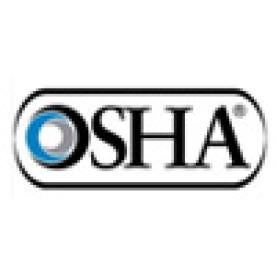Through appointments, regulations, and rollbacks, the Trump administration and Republican led Congress will undoubtedly have a major impact on the Occupational Safety and Health Administration (OSHA). President Trump has nominated Andy Pudzer to serve as Secretary of Labor, who will in part oversee OSHA. Mr. Pudzer previously served as CEO of CKE Restaurants, owner of Carl’s Jr. and Hardee’s, and has argued that government overregulation is hurting businesses. The Senate confirmation hearing for Mr. Pudzer is expected to occur in February.
Already the Trump administration has taken dramatic action to curtail regulations. On January 20, 2017, Assistant to the President and Chief of Staff Reince Priebus issued a memorandum effectively freezing new regulations. The memorandum requests that agencies send “no regulation to the Office of the Federal Register (the “OFR”) until a department or agency head appointed by the President after noon January 20, 2017, reviews and approves the regulation.” Further, the heads of Executive branch heads of departments and agencies are to withdraw any regulations sent to OFR, but not published in the Federal Register. For regulations already published in the Federal Register, but which have not taken effect, department and agency heads are to postpone their effective date to 60 days after the publication of the memorandum, which falls on March 21, 2017.
Republicans in Congress have signaled interest in undoing certain controversial OSHA regulations implemented under the Obama administration. In December, the House Freedom Caucus, a group of conservative representatives, issued its First 100 Days: Rules, Regulations, and Executive Orders to Examine, Revoke, and Issue. Targeted by the Freedom Caucus are three recent rules: 1) the OSHA Silica Rule (81 FR 48708), which is expected to have a costly impact on the construction industry; 2) the Reporting Rule (81 FR 29623), which imposed electronic filing and limited employee drug testing and incentive programs; and 3) the DOL Inflation Catch-up Adjustment (81 FR 43430), which increased OSHA fines by approximately 78 percent.
History has shown that a change in presidential administration can dramatically impact OSHA regulation. During the transition from Democrat to Republican administrations in 2001, Congress was able to undo a burdensome OSHA rule enacted in the twilight of the outgoing administration. Soon after the 2000 election, the Clinton administration enacted the controversial ergonomics rule. At the time, industry groups estimated that the rule would be costly and burdensome to businesses while offering little safety improvement to workers. However, Congress acted quickly after the inauguration of George W. Bush to use the Congressional Review Act (CRA) to undo the ergonomics rule. The CRA allows Congress to issue a joint memorandum on regulations that it wants to undo within 60 session days of the enactment of the regulation. Beyond merely repealing such rules the CRA prohibits an agency from enacting “substantially similar” regulations in the future. Thus, any future ergonomic rule will certainly be subject to legal challenge under the CRA to the extent that the law is “substantially similar” to the 2000 ergonomics rule. Indeed, advocates for a future ergonomics rule would have to craft a rule that purposefully avoids similarities to the original rule, a challenging proposition.
This time around, it appears that OSHA learned its lesson from the ergonomics rule and avoided sending controversial rules to Congress in the date range when the rules would be vulnerable under the CRA. According to an analysis by the Congressional Review Service, agency final rules submitted to Congress on or after June 13, 2016 could be subject to the CRA. However, OSHA sent controversial rulemaking, such as the Silica Rule and the Reporting Rule, to Congress prior to June 2016. Congress can still undo these rules but it would take legislation outside of the CRA framework. Indeed, the procedure used under the CRA is the same as the enactment of a law and there is nothing stopping Congress from enacting laws specifically aimed at rescinding or modifying OSHA rules at any time. Additionally, new administrations can limit OSHA’s reach by working with Congress to cut the agency’s budget.


 i
i

